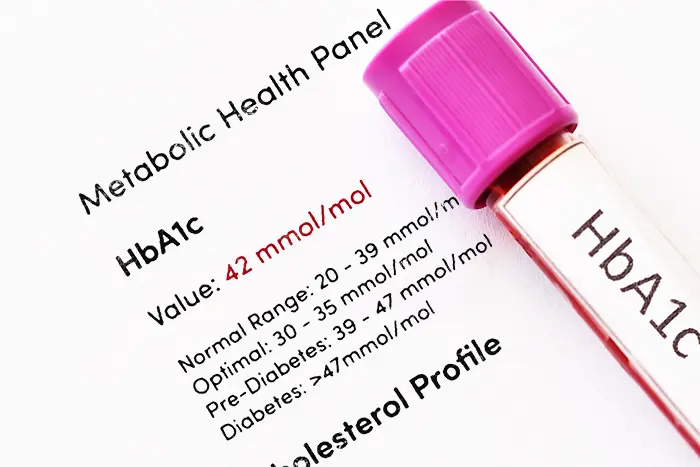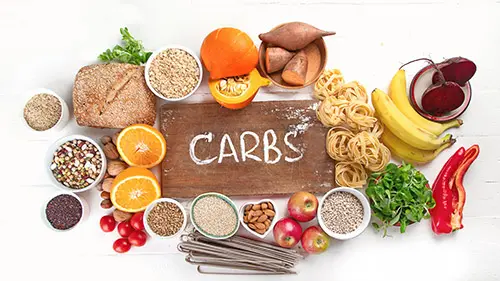How to lower blood sugar
Published
Top tips to lower your blood sugar
- Lower blood sugar is associated with better health.
- Aerobic and strength training makes your muscles better at managing a glucose load.
- A low calorie, low carbohydrate diet is the best approach to lower blood sugar.
- Losing fat mass will also improve insulin sensitivity.
- Good sleep and stress management are also fundamental to lowering blood sugar.
- Using Selph CGM to monitor your blood sugar directly and get advice from our metabolic health experts.
Good blood sugar control is a health fundamental. Better control is associated with a lower risk of heart disease, stroke, cancer, dementia and diabetes. Normally, your body keeps blood sugar regulated. But when your lifestyle leans toward unhealthy eating, poor sleep and too little movement, that balance can slip.
In this article, we go through the most effective ways to lower your blood sugar and improve your metabolic health. But first, let’s take a quick look at what we should be aiming for when it comes to blood sugar levels.
What blood sugar level should you aim for?
There are two main ways you’re going to be checking your blood sugar levels - a continuous glucose monitor (CGM) or an HbA1c blood test.
If you’re checking your blood sugar level on a CGM, you should be aiming for a fasting blood sugar of 5 mmol/L (90 mg/dL) or lower. However, a fasting blood sugar level of 3.9 to 5.5 mmol/L (70-99 mg/dL) is still considered normal. If you’re just looking at your average blood sugar level overall, you should be aiming for an average blood sugar of 5.5 (99 mg/dL) mmol/L or lower but anything from 3.9 to 6.5 mmol/L (70-117 mg/dL) would be normal.
If you’re checking your blood sugar level using the HbA1c blood test (check out our article for more info) then you should be aiming for an HbA1c of 30 to 35 (mmol/mol) but 25 to 38 mmol/mol is still normal.
We have good evidence that aiming for better blood sugar control, even within the normal range, is associated with a lower risk of health problems such as heart disease and cancer1.
| Optimal | Normal | |
| Fasting blood sugar | ≤ 5 mmol/L (≤ 90 mg/dL) | 3.9 - 5.5 mmol/L (70 - 99 mg/dL) |
| Average blood sugar | ≤ 5.5 mmol/L (≤99 mg/dL) | 3.9 - 6.5 mmol/L (70 - 117 mg/dL) |
| HbA1c | 30 - 35 mmol/mol | 25 - 38 mmol/mol |
Flex the muscles to fix the sugar
You’ve probably heard this before – regular exercise helps keep your blood sugar within the normal range. We can’t emphasise this enough. With a consistent exercise routine, you can lower your blood sugar and break free from the potential effects of high glucose levels2. So how does exercise help?
Muscle plays a key role in the disposal of glucose after a meal. It clears up to 80% of the ingested glucose. Therefore, when you keep your muscles active, they mop up more glucose from your bloodstream. Active muscles become more responsive to insulin signals. In fact, active muscles can absorb glucose from the bloodstream even without even requiring insulin. For example, taking a walk after a meal engages your muscle tissue, drawing glucose from your bloodstream for use or storage. Next time, consider some physical activity after eating as a way to manage high blood sugar.
What exercise is best to lower blood sugar?
What kind of exercise is best for lowering blood sugar? Regular aerobic exercises, particularly moderate-intensity “zone two” efforts that challenge your fitness and engage your heart, help stimulate the muscles to take up more blood sugar. Zone two exercises get your heartbeat to between 60 to 70% of your maximum heart rate. You should be able to hold a conversation in zone 2 but someone would know you were exercising. For most people, jogging and cycling are the best ways to maintain zone 2 but you might also be able to do this rowing or swimming.
Bigger muscles use more glucose so strength training is also key. Resistance training will not only use lots of glucose but also increase your muscle mass so that you have a bigger “sink” to dispose of glucose. Aim for around 2 hours of strength training a week.
What diet is best to lower blood sugar?
You can still have high blood sugar levels on a no-carb (keto) diet if you overdo it on total calories.
The best diet to lower your blood sugar is one that is balanced with, or slightly below, your energy needs. The number that matters most is total calorie intake. If you consume more calories than you burn, you will have a net accumulation of energy and your blood sugar levels will tend to be higher. Consume the same or fewer calories than you burn and you’ll tend to have lower blood sugar.
There are lots of ways you can lower your total calorie intake - restrict the total amount of food you eat, restrict a certain macro - like carbs - or narrow the time window you have to eat in. If good blood sugar control is your goal, there’s some evidence that a low carb approach is a particularly beneficial way to lower total calorie intake. This makes sense because carbs are converted directly into glucose. A low carb diet would be where you keep carbohydrate intake under 130g per day.
But remember, you can still have high blood sugar levels on a no-carb (keto) diet if you overdo it on total calories.
Other more general diet tips to lower your blood sugar levels are to:
- avoid ultraprocessed foods: UPFs tend to be high in sugar and don’t fill you up.
- avoid refined carbohydrates and opt for complex carbs: complex carbs are absorbed more slowly because they take time to break down. Sugary drinks are a definite “no”.
- increase your fibre intake: fibre slows glucose absorption from the gut as well as feeding your gut bugs which help regulate your gut hormones like GLP.
- lower your alcohol intake: a pint of beer or a glass of wine has about 225 kcal. If you have a drink a day, that's an extra 1,500 calories per week
Drop your weight to drop your sugar
Being overweight leads to insulin resistance, where your body needs more insulin to keep blood sugar levels under control.. Specifically, excess fat builds up in your muscles and liver and interferes with how your body responds to insulin.
Weight loss is well known to reverse diabetes. Even modest weight loss, just 5% of your body weight, can significantly improve blood sugar levels3. Weight loss carries other health benefits such as lowering blood pressure and improving cholesterol levels.
Weight loss obviously goes hand-in-hand with reducing calorie intake, as mentioned above. Cutting your calorie intake by 500 Kcal per day will lead to roughly half a kilo (0.5kg) weight loss a week. Remember though, you’re trying to lose fat, not lean (muscle) mass. It’s important to combine a calorie deficit with a high protein intake (2g per kg body weight per day) and regular resistance training.
Sleep like your sugar depends on it
Sleep is often overlooked when discussing blood sugar control. A good night’s sleep is an important cog in the glucose-lowering wheel. When combined with proper diet and exercise, quality sleep has a significant effect on blood sugar control. Studies have shown that sleeping 7 to 8 hours per night leads to better glucose regulation4.
Even a few days of sleeping 4.5 hours is enough to cause insulin resistance in young otherwise fit individuals5. Studies have also shown that poor sleep leads to increased appetite and people who had 4 to 5 hours of sleep had a higher caloric intake the following day compared to those who slept for 8 hours6.
Keep calm and carry on
Stress leads directly to an increase in the blood sugar7. When you’re under stress, your body will produce stress hormones such as cortisol and adrenaline. These hormones trigger the liver to release glucose into the bloodstream. In a stressful situation, the body assumes you need more energy. Think of the flight or fight response. To take a dash, you need more energy. The body supplies that in stressful situations but this becomes a problem if it is happening way too often
If you’re working a stressful job or experiencing high levels of anxiety, your blood sugar may remain persistently elevated, creating a recipe for insulin resistance and high blood sugar levels.
Adopting stress management techniques can significantly reduce your blood sugar. Consider practices like mindfulness, meditation or simply taking a walk in nature to help you manage stressors. Reducing the levels and frequency of stress hormone release can help you achieve better blood sugar control.
Measure, don’t guess
Keeping your blood sugar within normal ranges is essential for metabolic health but how do you know you’re on the right track? You have to measure your blood glucose levels. The best way to do this is with a continuous glucose monitor.

Blood glucose levels fluctuate throughout the day depending on what you eat, your stress levels, and your activity (check out “Context matters - why there's more to blood sugar control than food”). So a single glucose reading during a doctor’s visit or even the Hba1c blood test doesn’t provide a complete picture of how your body handles glucose in different situations. This is where continuous glucose monitoring (CGM) comes in.
But it’s not easy to interpret data from a CGM yourself. That’s why we created Selph CGM. With our CGM package you get the CGM, but more importantly you get our analysis and a report to understand your data and how to improve your sugar-handling. We also do a glucose challenge test to see how your metabolism responds to a glucose load. To top it all off, you get to discuss your results with one of our metabolic health experts.
Get tips on better health
Sign up to our emails on the better way to better health.
We'll keep you up-to-date with the latest research, expert articles and new ways to get more years of better health.







